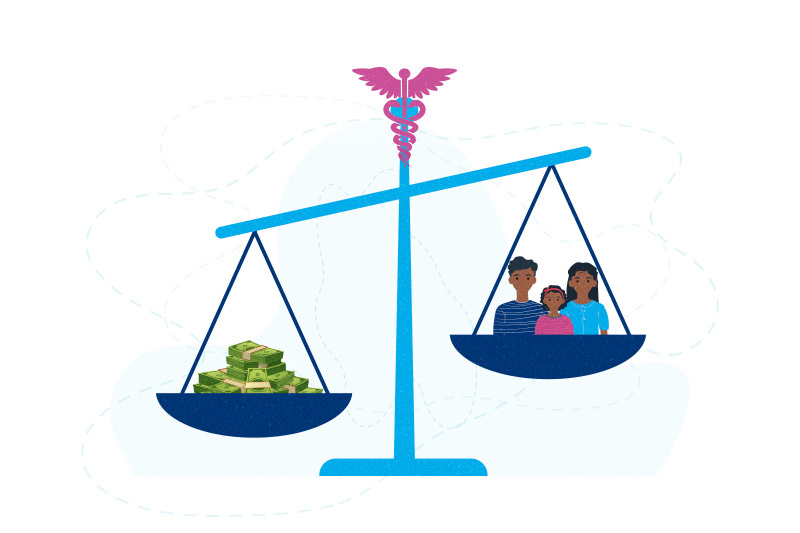Affordable Care Act eases health care costs for families with children, study finds

On November 10, the U.S. Supreme Court will hear arguments on a case challenging the Affordable Care Act. With the ACA’s future in question, a study from Boston Children’s Hospital provides a reminder that the law has substantially reduced health care expenses for many families with children — particularly low- and middle-income families.
Key takeaway
After the ACA was enacted, fewer low- and middle-income families with children have experienced burdensome out-of-pocket health care costs.
Elimination of the ACA, popularly known as Obamacare, could raise barriers to care for many of the roughly 40 percent of U.S. households with children, the researchers say.
“Most of the ACA’s key policies targeted improving insurance coverage and affordability for lower-income adults, but these policies may have spillover effects on families with children,” says Alison Galbraith, MD, MPH, of Boston Children’s and the Harvard Pilgrim Health Care Institute. Galbraith is senior author on the new study, published this week in JAMA Pediatrics. “This matters because high out-of-pocket health care costs can create barriers to getting needed care for children and financially strain their families.”
The ACA and children
Among its many provisions, the ACA includes measures to improve access to and affordability of health insurance. These include a Medicaid expansion for the lowest-income people and the ACA Marketplaces, through which lower- and middle-income families can buy private health insurance, often with subsidies or tax credits to make it more affordable.
We show that striking down the entire ACA would be a huge threat to the most vulnerable families.”
– Lauren Wisk
The study used nationwide data from more than 92,000 families with children, taken from the Medical Expenditure Panel Survey. The researchers focused on the years 2000 to 2017 — before and after the ACA’s enactment in 2010 — and analyzed families’ out-of-pocket spending relative to income.
After the ACA, fewer families with children reported burdensome out-of-pocket health care costs, defined as exceeding a specific percentage of their income. From pre-ACA to post-ACA, these proportions fell:
- from 6.1 percent to 4.6 percent among middle-income families (incomes at 251-400 percent of the federal poverty level)
- from 24.6 percent to 17.3 percent among low-income families (incomes at 139-250 percent of the federal poverty level)
- from 35.6 percent to 23.7 percent among the lowest-income families (those eligible for Medicaid; incomes at 138 percent of the federal poverty level or lower)
For high-income families, the burden didn’t significantly change, going from 1.1 percent to 0.9 percent.
Improving access to health insurance
Fewer families were uninsured after implementation of the ACA as compared with before. Among children, the percentage uninsured fell from 19.7 percent to 13.8 percent; among adults, it fell from 28.6 percent to 24 percent. This suggests that many children could lose their insurance should the ACA be abolished.
“Most prior work on the financial impact of the ACA has focused on adults,” notes Lauren Wisk, PhD, first author on the study and now at the University of California, Los Angeles. “We are the first to look at how ACA policies impacted coverage and costs for families of children, and we show that striking down the entire ACA would be a huge threat to the most vulnerable families.”
Striking down the ACA could threaten child health in other ways, notes Joshua Greenberg, vice president of Government Relations at Boston Children’s Hospital.
“In addition to the income and affordability impacts, ACA repeal would risk undermining other protections important to children, including coverage for pre-existing conditions and young-adult dependent children,” Greenberg says.
Can the ACA be improved?
While the ACA has eased the financial burden of health care for many families with children, the study also shows that many low- and middle-income families continue to struggle with health care premiums and out-of-pocket costs. Middle-income families in ACA Marketplace plans often face high deductibles and copays, while finding themselves ineligible for the Children’s Health Insurance Program (CHIP) or Medicaid.
“Even if the law is upheld, more work needs to be done to ensure that the most vulnerable families are fully protected against high costs,” says Wisk.
Alon Peltz, MD, MBA, MHS, of Boston Children’s, Harvard Medical School, and the Harvard Pilgrim Health Care Institute, was coauthor on the paper. The National Institute of Diabetes and Digestive and Kidney Diseases supported the study.
Learn more about Boston Children’s legislative priorities and the Children’s Advocacy Network.
Related Posts :
-

Medical care for youth with neurodevelopmental disabilities: A call for change
According to national data, one in six children has a neurodevelopmental disability (NDD) such as autism, intellectual disability, or ADHD. ...
-

BRD7 research points to alternative insulin signaling pathway
Bromodomain-containing protein 7 (BRD7) was initially identified as a tumor suppressor, but further research has shown it has a broader role ...
-

When diagnosis is just the first step: The Brain Gene Registry
Through advances in genetic sequencing, many children with rare, unidentified neurodevelopmental disorders are finally having their mysteries solved. But are ...
-

Engineered cartilage could turn the tide for patients with osteoarthritis
About one in seven adults live with degenerative joint disease, also known as osteoarthritis (OA). In recent years, as anterior ...





